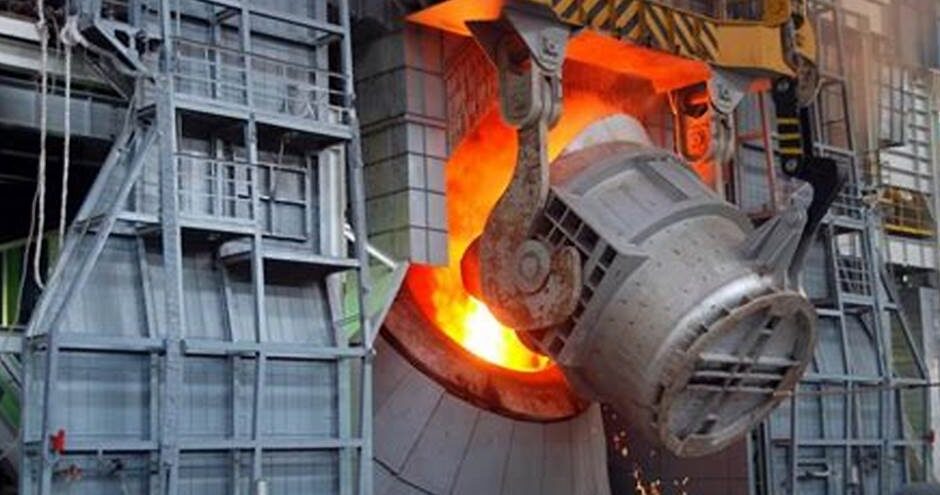Warum muss das Hochofensteuerungssystem RFID hinzufügen??
Hochöfen sind das Herzstück der Stahlproduktion, Doch die Betreiber stehen vor ständigen Herausforderungen:
- Falsche Identifizierung von Vermögenswerten: Manuelle Verfolgung der Blasform, Riser und Tiegel führen zu Fehlern und Verzögerungen.
- Ungeplante Ausfallzeiten: Unentdeckter Verschleiß der feuerfesten Auskleidung oder des Kühlsystems kann zu Produktionsunterbrechungen führen, with losses exceeding $50,000 pro Stunde.
- Safety risks: Human intervention in high temperature areas can endanger worker safety.
- Compliance loopholes: Incomplete maintenance logs cannot pass ISO 50001 or OSHA audits.
RFID technology can solve these problems in the following ways:
- Enable real-time automated tracking of equipment in extreme environments.
- Predict failures and issue alarms before component failures affect operations.
- Ensure safety and compliance through contactless monitoring.
Benefits after RFID integration:
- Provide an Industry 4.0 blast furnace solution with embedded RFID.
- Truly help enterprises reduce safety production risks
Analysis of RFID solutions:
1.Asset tracking in extreme environments
Problem: Manual records cannot track components such as tuyere or thermocouples in the 1,500°C area.
RFID solution:
- Attach high-temperature RFID tags to blast furnace components.
- Scan tags at a safe distance using an UHF RFID reader.
2.Predictive maintenance of refractory linings
Problem: Sudden failures of refractory linings cause 10-15% production losses each year.
RFID solution:
- Embed sensor-enabled RFID tags to monitor lining thickness and temperature gradients.
- Integrate data with SCADA systems (such as Siemens PCS7) to trigger maintenance alarms.
3.Safety and compliance in hazardous areas
Problem: Manual inspections in blast furnace areas pose worker safety and compliance risks.
RFID-Lösung:
- Deploy explosion-proof RFID tags that meet ATEX standards.
- Automate safety inspections by tracking equipment status and personnel access logs through RFID.
[Kontaktieren Sie uns]You will receive a free RFID test kit for tracking tuyere, thermocouples, crucibles, cooling system components, and badge tracking of personnel in hazardous areas in the blast furnace control system.
How RFID Integration with Blast Furnace Control System Works
1.Hardware-Einrichtung:
- RFID-tags: Attached to key components (z.b.. tuyere, cooling duct) or embedded in the furnace lining.
- RFID-Lesegeräte: Installed at key nodes (z.b.. feed port, discharge area) or on automated guided vehicles (AGVs).
- Control System: Synchronize RFID data with PLC via OPC UA.
2.Data Flow:
- RFID readers scan tags during maintenance or production cycles.
- Data is transmitted to SCADA for real-time analysis (z.b.. lining wear rate, component life).
- Alarms are triggered when abnormal conditions occur (z.b.. overheating, unauthorized access).
3.Software Integration:
- Middleware: Siemens RF650R or Honeywell Forge for predictive analytics.
- API: Link RFID data to MES (z.b.. SAP ME) to generate compliance reports.
We can provide:
Cost-effective RFID solution for blast furnace automation: Reduce conveyor tracking costs by 25%.
UHF RFID for blast furnace asset tracking: Ensure reliable reading in dusty environments.
RFID tags for steel plant safety compliance: ATEX compliant.
Ready to improve your blast furnace control system?
We help manufacturers deliver smarter, safer blast furnace systems. Kontaktieren Sie uns:
- Free testing of RFID tags proven for extreme metallurgical conditions.
- Return on investment (ROI) analysis customized to customer needs.








